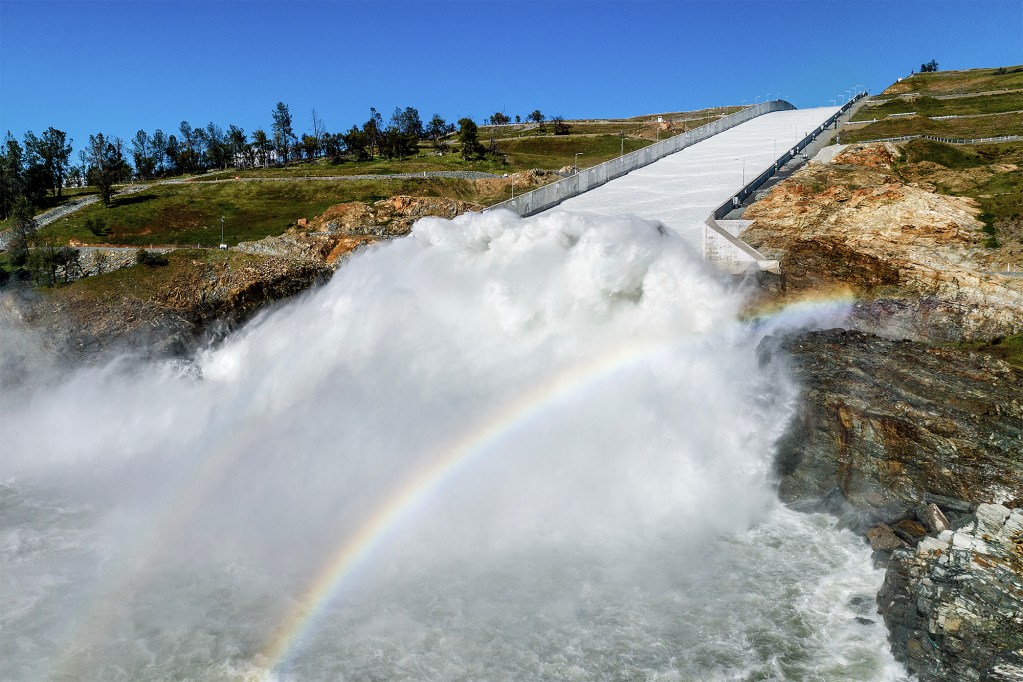Most of us operate on the calendar year — the 12 months that begin on January 1 and end on December 31.
Many governments and major corporations use the fiscal year — typically beginning on July 1 and running until June 30 of the following year.
However the federal government’s fiscal year, which began on July 1 for 132 years, was shifted in 1974 to an October 1 start to accommodate federal officials’ insistence on a month-long escape from Washington’s steamy summer weather.
In California, the most important calendar may be the “water year,” which also begins on October 1, because how much the state’s reservoirs have in storage and how much nature provides in the form of rain and snow are existential factors in the lives of nearly 40 million people.
The water year begins on October 1 because historically, the state’s roughly six-month-long rainy season begins in the fall.
Federal and state managers of California’s extensive system of dams, reservoirs and canals that capture, store and distribute water count how many acre-feet (each one 326,000 gallons) they have in the water bank. They then project how much more they can anticipate over the next half-year and plan on how much and when they will deliver water to dozens of local agencies, especially those serving agriculture.
The current water year begins with healthy water savings. After two relatively wet winters, including the blockbuster 2022-23 season that ended several years of drought, major reservoirs have close to 100%, or above, of historic October levels.
Shasta Lake, the largest federal reservoir, has 107% of historic October storage this week, while Lake Oroville, the state’s biggest, is at 96%.
That should be enough to carry the state through a relatively dry 2024-25 winter, which is possible because meteorologists see a 71% chance that the season will be dominated by a La Niña condition in the Pacific Ocean. It often — but not always — tends to push the jetstream to the north, bringing heavier precipitation to the Pacific Northwest but reducing rain and snow to the south, meaning California.
“California experienced record heat and dry conditions this summer, drying out the landscape and putting our hydrology behind before the water year even starts,” state climatologist Michael Anderson said in a statement issued by the Department of Water Resources to mark the 2024-25 water year’s onset. “While there is still a lot of uncertainty around how La Niña could impact the state this year, we know we can count on it to include extreme conditions.”
California’s weather is notoriously difficult to forecast more than a week or two in advance, so the only certainty about the new water year is that it begins with strong storage numbers. That said, how much water is actually delivered to downstream users will depend not only on storage and precipitation but on California’s ever-shifting regulatory climate.
Official state water policy is to become more resilient to the long-term effects of climate change, assumed to be less precipitation in the form of snow and more in rain. That indicates a need for more storage to capture winter rains, such as the pending construction of Sites Reservoir on the western side of the Sacramento Valley.
However, the state also wants San Joaquin Valley farmers, who receive the bulk of water deliveries from federal and state reservoirs, to take less, thus providing more water for wildlife in the Sacramento-San Joaquin Delta.
Meanwhile, Donald Trump is promising that if he returns to the White House he’ll help farmers resist reductions that the state wants.
In California, tricky water politics are as important as hydrological factors such as precipitation and storage.

